Why the site was chosen
This would be a pole replacement rather than a new installation, and roadside access could be easily and efficiently achieved by using appropriate traffic management and mobile elevating work platforms. Replacing the existing timber poles with the Jerol composite poles would be straightforward process and a good way to try this new product.
What are Jerol Composite Poles?
Jerol Composite Poles are strong, Creosote free, UV stable, and can be fitted with the same hardware and installed into the ground in the same way as a traditional timber pole. In fact installation is easier than a traditional pole because Jerol poles can be half the weight of their counterpart. The Jerol product is maintenance free and boasts a 80 year service life.
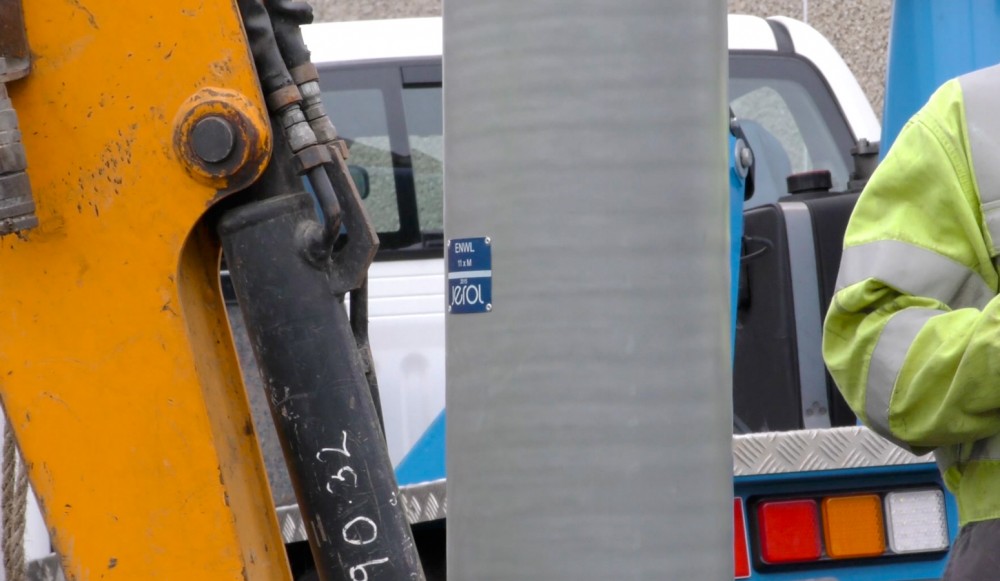
Replacing Timber with the Jerol Composite Poles
Client: Electricity North West owns, operates and maintains the North West’s electricity distribution network, connecting 2.4 million properties, and more than 5 million people in the region to the National Grid.
Location: Goodenber Road, High Bentham, North Yorkshire.
Purpose: To replace low voltage open-wire overhead line poles, as part of a planned programme, on Goodenber Road.

The Low Voltage (LV) 4-wire open-wire line on Goodenber Road had been identified as requiring two pole replacements. This was facilitated by the replacement of the existing poles with an 11 and 12 metre medium Jerol poles. The design of the poles had been specified at the quotation stage, enabling Signature to deliver the composite poles with the required drillings ready to fit line equipment. The poles were delivered to Electricity North West with four drillings at 300mm spacing as per ENA 43-30, ENA43-88 and Electricity North West specification drawings.
The installation of the Jerol poles at Goodenber Road, High Bentham, took place Tuesday 22nd March 2016 within the scheduled outage timeframe of 9:00am – 16:30pm.

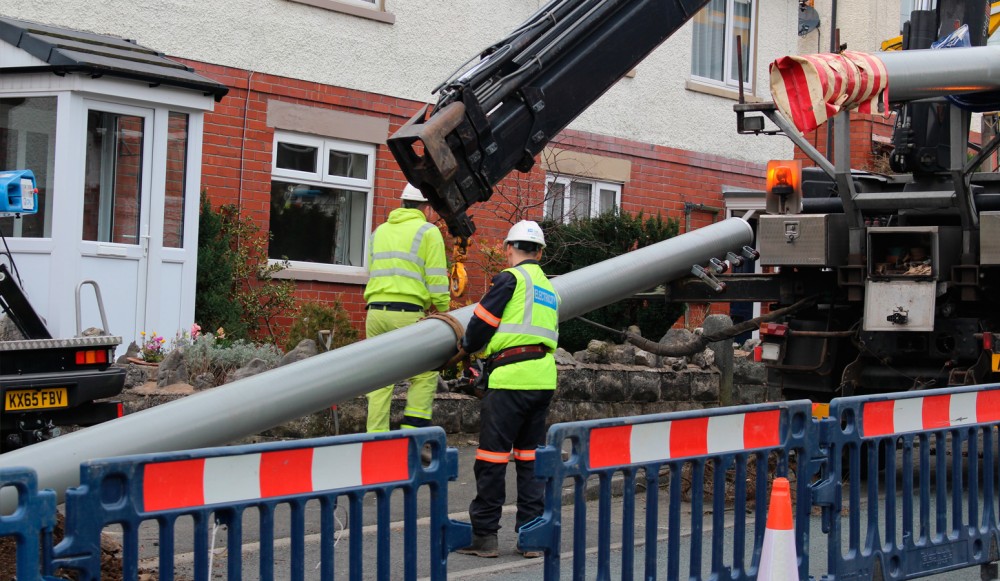

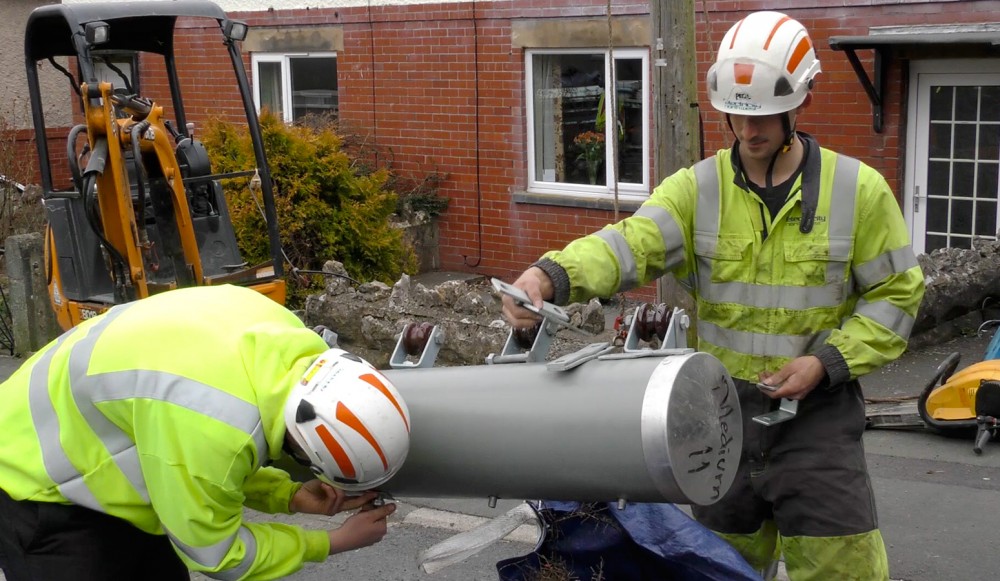
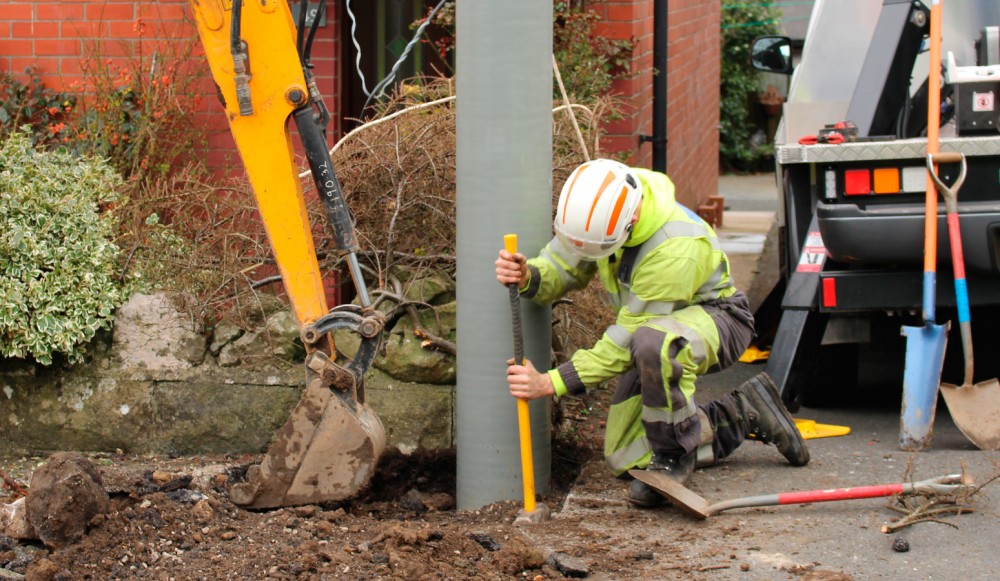
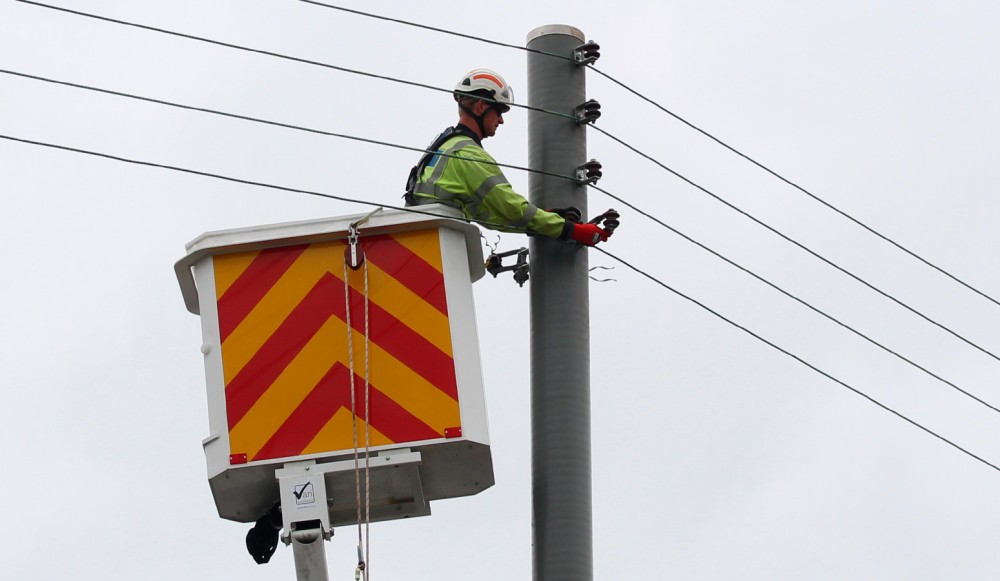
Feedback from the installation team was “When can I have a hundred of them?...” as they appreciated how easy they were to install.
“We have been very pleased at how easy it was to replace the old woodpoles with composite poles. There are only small differences in securing the insulators, fittings and cable guards. At Electricity North West we’re always looking at new innovations and took this opportunity to gain experience of working with composite poles and understanding the differences. It has been great to see how everyone has worked together to trial this new type of pole.” David Talbot, Overhead Circuits Manager at Electricity North West.
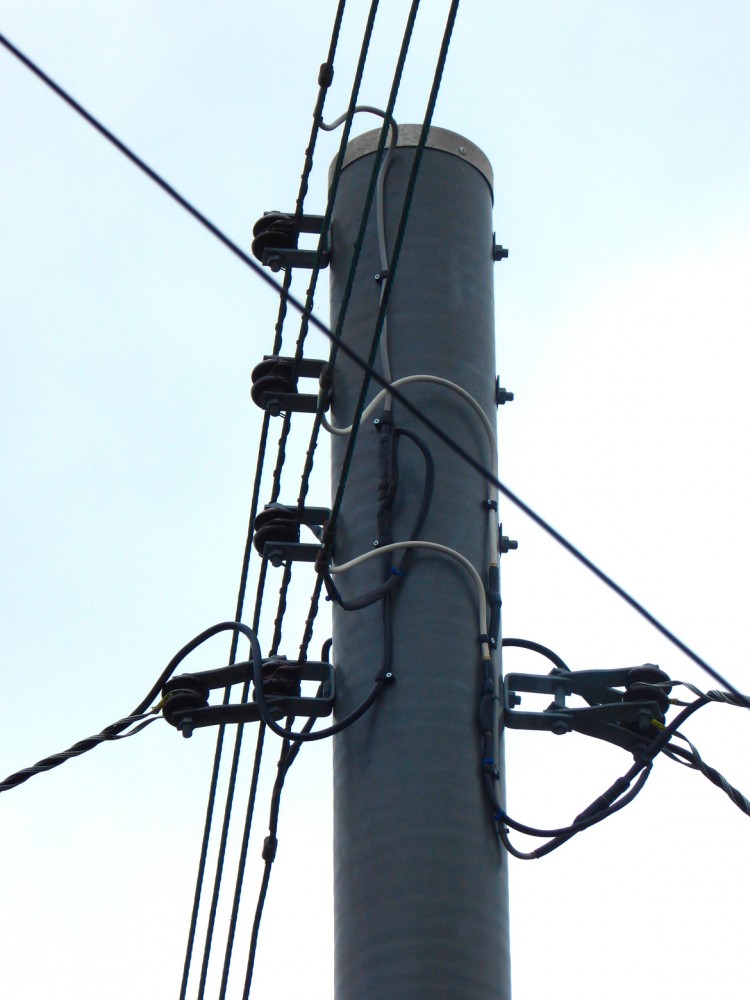
“I’m very proud to have been part of the team getting these first Jerol poles into the ground. It’s been quite a journey to get here, but it’s been worth it and I’m confident we now have a viable alternative to timber and Creosote.
The next stage is to nationally agree on a specification around these types of composite poles that will take into account that the 2.5 x timber safety factor can be reduced. Jerol poles are stronger, precision made and thoroughly tested. Revaluating this safety factor will save material and help reduce costs for the Network Operators.” David Franklin, Projects Manager for Mallatite Signature.
What makes a Jerol Composite Pole
Each composite pole consists of two layers; an inner fibre composite (GRP) and an outer layer of tough 3-4 mm coloured UV stable high-density polyethylene (HDPE).
- The core gives the pole its strength, which can be varied by increasing the thickness.
- The polyethylene offers high levels of UV protection and a tough outer layer enabling the pole to be safely climbed.
This material combination makes this pole light and easy to install, yet strong enough to cope with the most demanding of loads. Also, because the pole is hollow, installers have the option of routing cables internally.
Key Features
- Inert – No harmful contaminants to leach into the environment.
- Strong, Light and Non-conductive – Safer to work with and handle.
- Consistent – Manmade computer controlled production that will allow currently specified safety factors to be reduced, saving energy, material and costs.
- Less Taper – Jerol poles are much less tapered than timber needing a smaller excavation diameter saving time and cost.
- Tested - Results verified by extensive load testing showed that the torsional strength of the Jerol composite pole far exceeds that of the equivalent UK timber pole.
- Easy Install – Can be installed just like a timber pole.
- Compatible hardware – Can be drilled and installed with all industry standard hardware.

- Long Life – Maintenance free with a service life of 80 years.
- Woodpecker proof – The inner core of the pole is very tough and will resist attack.
Whole life costs
When comparing the Jerol product with traditional timber poles it’s important to look at the whole life costs because the Jerol composite pole is more than just a solution to Creosote.
- Whether it’s a replacement or new installation the amount of personnel and plant required to carryout the work means that the actual pole cost is only responsible for a small proportion of the over all costs.
- Amongst other benefits, the Jerol pole has a maintenance free service life of circa 80 years. Modelling with experienced overhead line managers, suggest that new timber poles with a Creosote alternative would have to be replaced at least once during the life cycle of the Jerol pole.
- Replacing a timber pole because of woodpecker damage is an expensive exercise and will not necessarily cure the problem, as the woodpecker is likely to return to the same site to re-establish their nest. Jerol poles are the perfect cost saving solution. The woodpecker will not be able to structurally damage the composite pole and will not be able to penetrate the high-density core layer. This will save the cost of a new pole and the associated installation.
How we got here
Back in 2011 EA Technology, a research and development organisation serving the electricity industry, were actively looking for an alternative for timber poles. We were invited by EA Technology to present the Jerol Composite Pole to a forum of distribution network managers from each Distribution Network Operator. It was at this forum that the relationship began with David Talbot, Overhead Circuits Manager at Electricity North West. David and his team were interested in this innovative new product.
As the study at EA Technology progressed the Composite Poles emerged as the best alternative to Creosoted timber poles compared to steel and concrete. In December 2013 a Jerol test line was installed at EA Technology’s facility in Chester. The Jerol product performed exceptionally well. It was strong, light, a great insulator, and compatible with all current hardware and installation methods. Plus unlike the creosote-impregnated timber, the Jerol pole is completely inert, far safer for the environment and the teams maintaining the networks.
Then in 2015, we were invited back to Electricity North West to present to a panel of Line Engineers. Laura Stelfox was one of the Design Engineers on the panel and following the success of the presentation and trial at EA Technology, worked with David to seek out a suitable location for a live installation. Later that year the site at Bentham was selected. Following a detailed survey Laura specified the type, height and drilling requirements for the new poles. These new composite poles were manufactured by Jerol in Sweden, drilled by our facility in Winsford and then delivered into Electricity North West ready to install.















